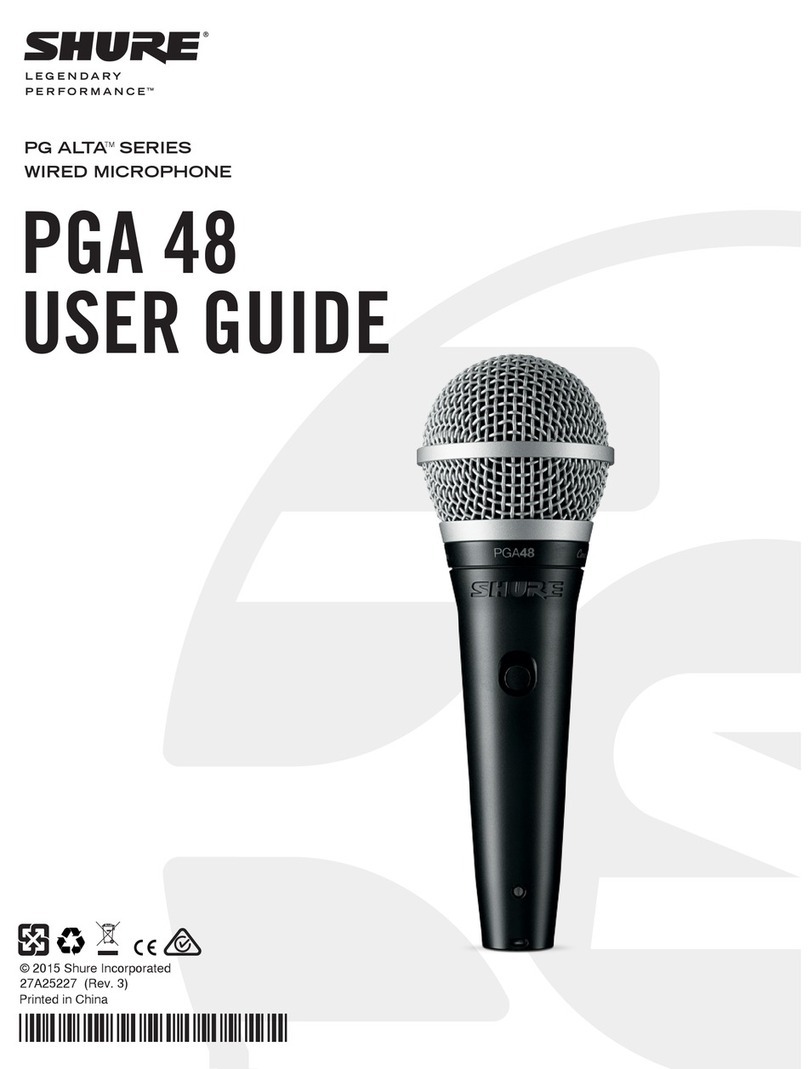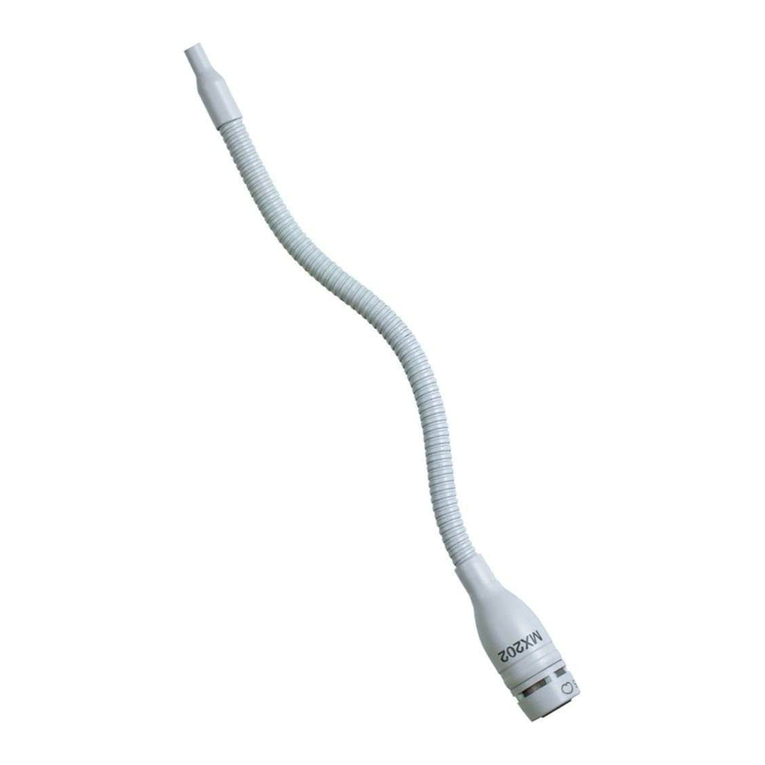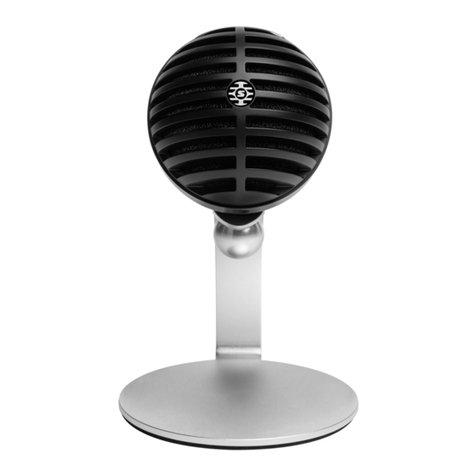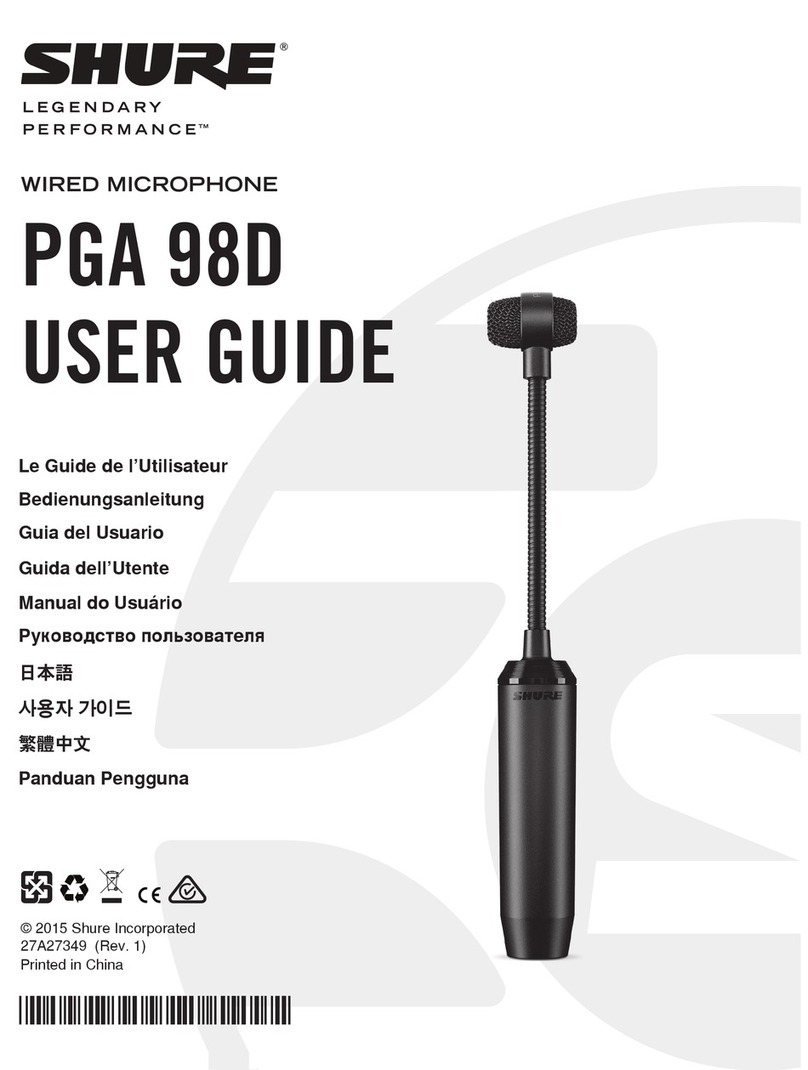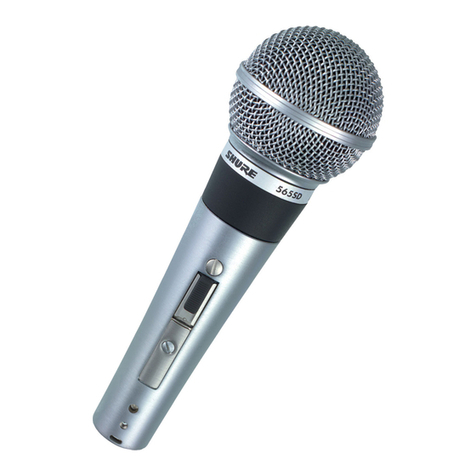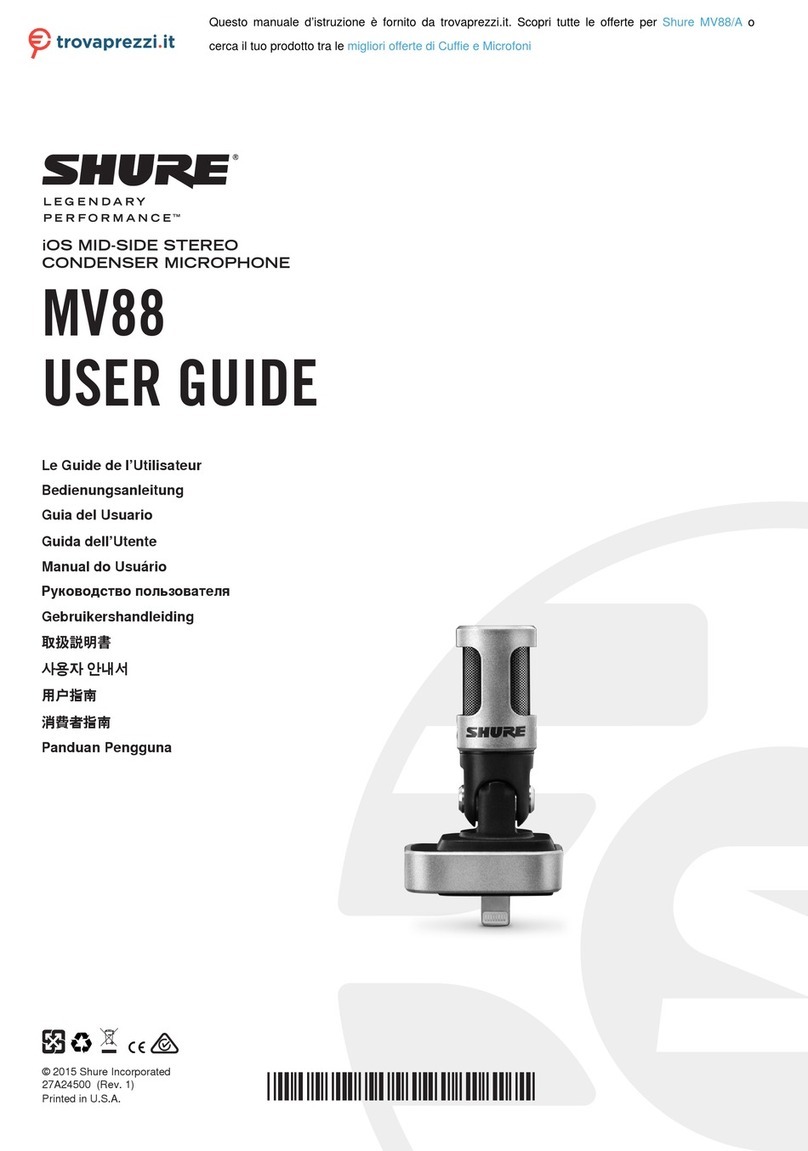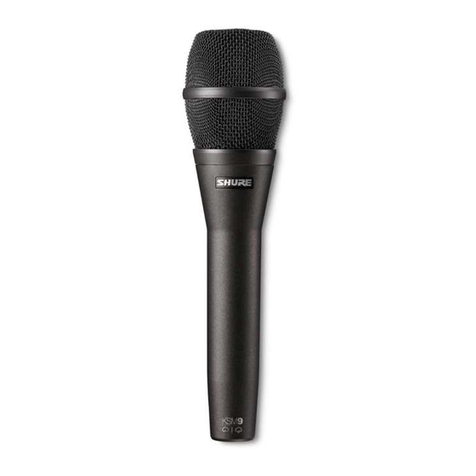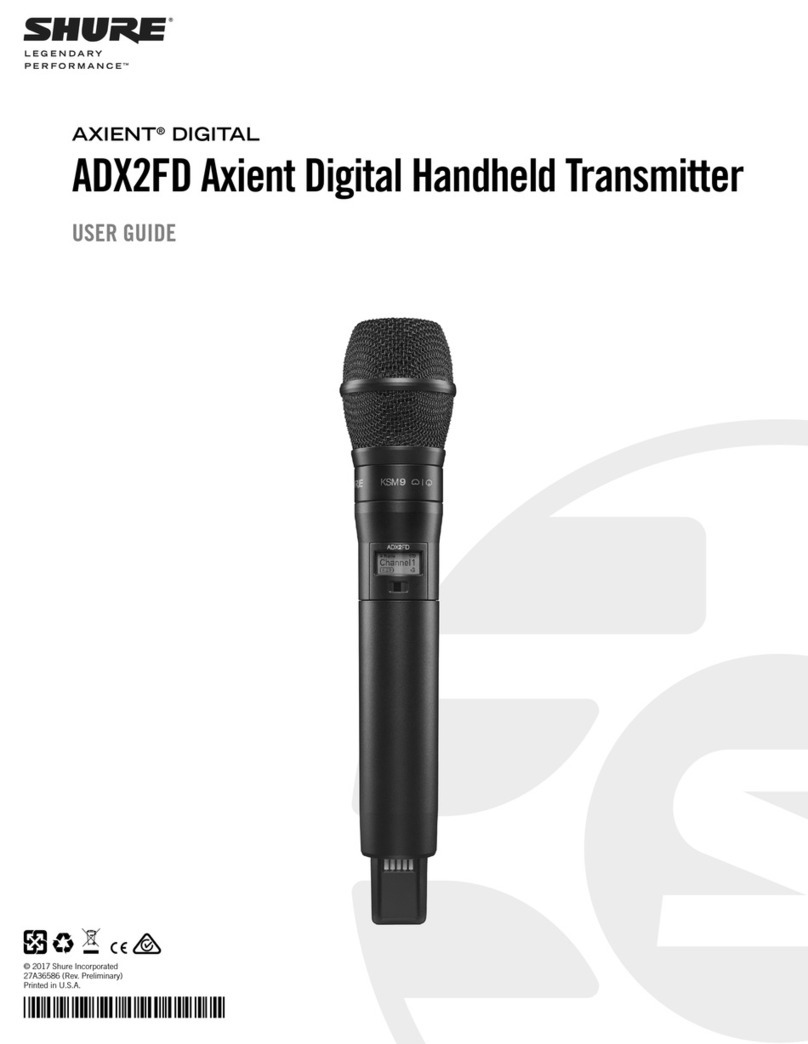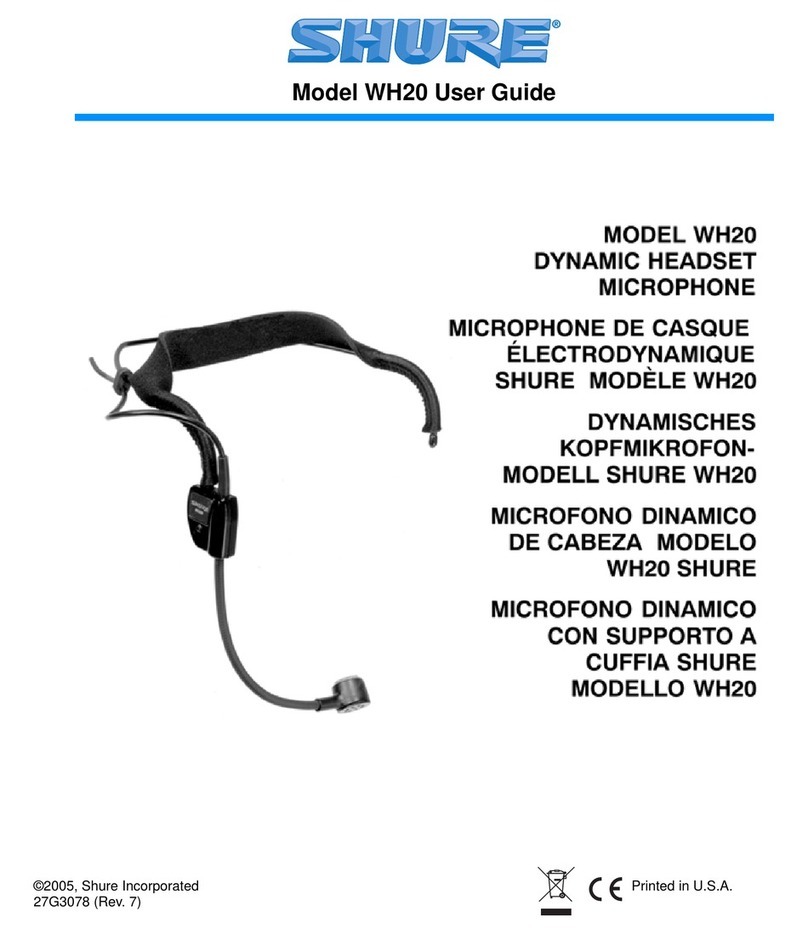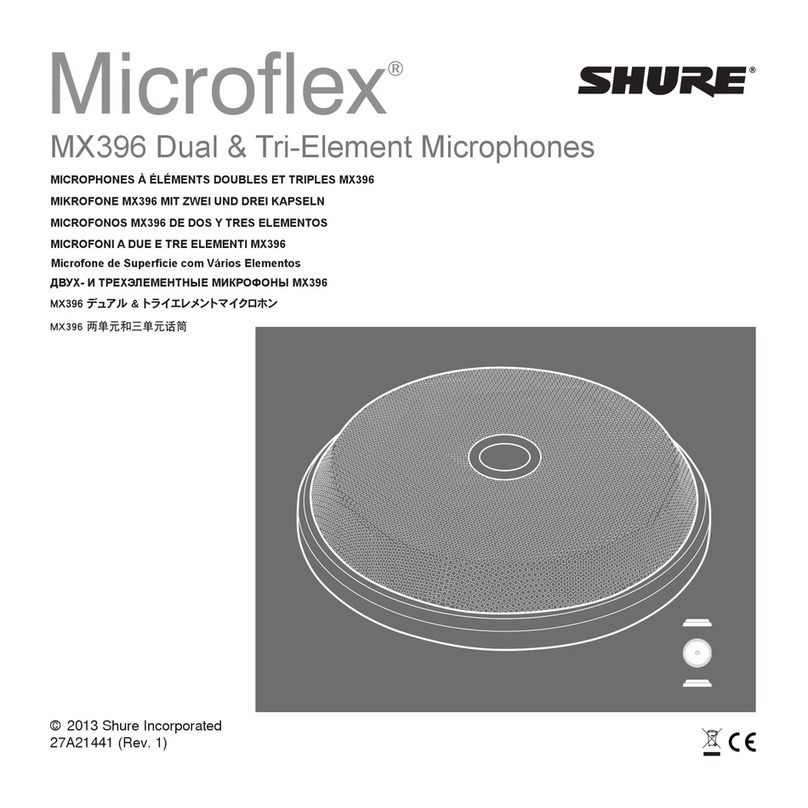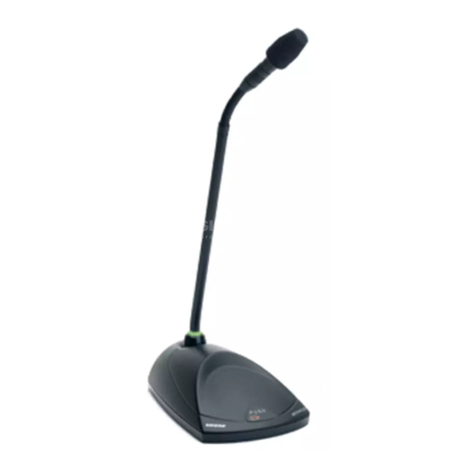
DTMF AIRCRAFT MICROPHONE
The Shure Model 888TT is handheld, amplified, noise–
cancellingDTMFcommunications microphone that isFAA
Certified for aircraft application (TSO-C58a). In addition to
its extremely clear transmission, even in noisy environ-
ments, the 888TT has very low sensitivity to hum pickup
and low susceptibility to radio frequency interference.
Ininstanceswheretransmitterinputgainrequiresmicro-
phone sensitivity modification, the 888TT has limited ac-
cess external screwdriver controls for independent adjust-
ment of both mic audio and DTMF levels. This eliminates
the problem of fixed audio levels that require disassem-
bling the microphone for adjustments. Restricted control
access,however,preventsaccidentalchangescommonto
other types of external controls.
The microphone has an illuminated keypad made of
tough silicone rubber, with durable printed characters that
willlast the life ofthe microphone. The keypadis backlit by
red LEDs, easily visible during night operation, minimizing
eye readjustment for night vision.
The 888TT is designed for use with most currently avail-
ableaircraft radios.Forinstallation convenience,allmicro-
phone and signaling functions, including keypad illumina-
tion,arepowereddirectlyfromthemicrophoneinputcircuit
of most transmitters, reducing the need for equipment
modification. A three-conductor MODULINKcable (sold
separately)hasatelephone-typemodularplug, with an ef-
fective strain relief, to connect to the microphone and a
PJ-068 plug on the equipment end for connection to most
aircraft radios. This cable can be instantly changed or re-
placed without soldering.
The 888TT is ergonomically designed; it fits naturally
and comfortably in the hand and is not affected by heat or
humidity. The voice-entry port is at the top of the micro-
phone body for simple, natural transmitting. The rugged
ARMO-DURcase is immune to oil, grease, most fumes
and solvents, salt spray, sun, rust and corrosion. The
888TT is outstanding in its ability to withstand mechanical
shocks and vibration. Its Million-Cycle PlusTM leaf-type
switch is a double-pole, single-throw type, designed to re-
sisttheeffectsofsevereoperatingconditionsandconstant
use. It has nickel-silver blades with palladium-alloy con-
tacts for reliable oxidation-free operation.
The microphone is supplied with output levels factory
preset to meet TSO-C58a requirements. Adjustments
should be made only by an FAA Approved Service Facility
or the Shure Service Department.
The 888TT is supplied with a small screwdriver for re-
leasing the modular-plug microphone cable from the case
andforadjustingthemicrophoneamplifier gain and DTMF
level. A mounting loop is supplied affixed to the micro-
phone,andmountingbracketsforattachingtoradioequip-
ment or other surfaces are available in quantities of three
as Shure RK6MB.
Features:
•FAA Certified for aircraft use
•Detachable MODULINK modular-plug coil cord with
PJ-068 aircraft-radio plug
•Noise-canceling with frequency response tailored for
optimum intelligibility
•Top-Talk Sound ChannelTM for clear voice input, easy
handling
•Built-in transistor amplifier powered by carbon-micro-
phone-type circuit
•Illuminated keypad with positive tactile confirmation
and audible verification tones
•Convenient screwdriver-accessible microphone gain
adjustment accommodates most input circuits
•Simple easy-to-use continuous-tone dialing
•Screwdriver accessible DTMF level adjustment, inde-
pendent of microphone gain setting
•Low sensitivity to hum and rf interference
•Rugged Million-Cycle PlusTM leaf-type switch stands
up under severe environments and constant use
•High impact ARMO-DURcase, strong, lightweight,
comfortable to the touch in hot or cold environments
•Rugged and dependable under all operating condi-
tions
Shure Brothers Incorporated
222 Hartrey Avenue
Evanston IL 60202-3696 U.S.A.
Model 888TT User Guide
27A3041 (RL)
E1998, Shure Brothers Incorporated Printed in U.S.A.

